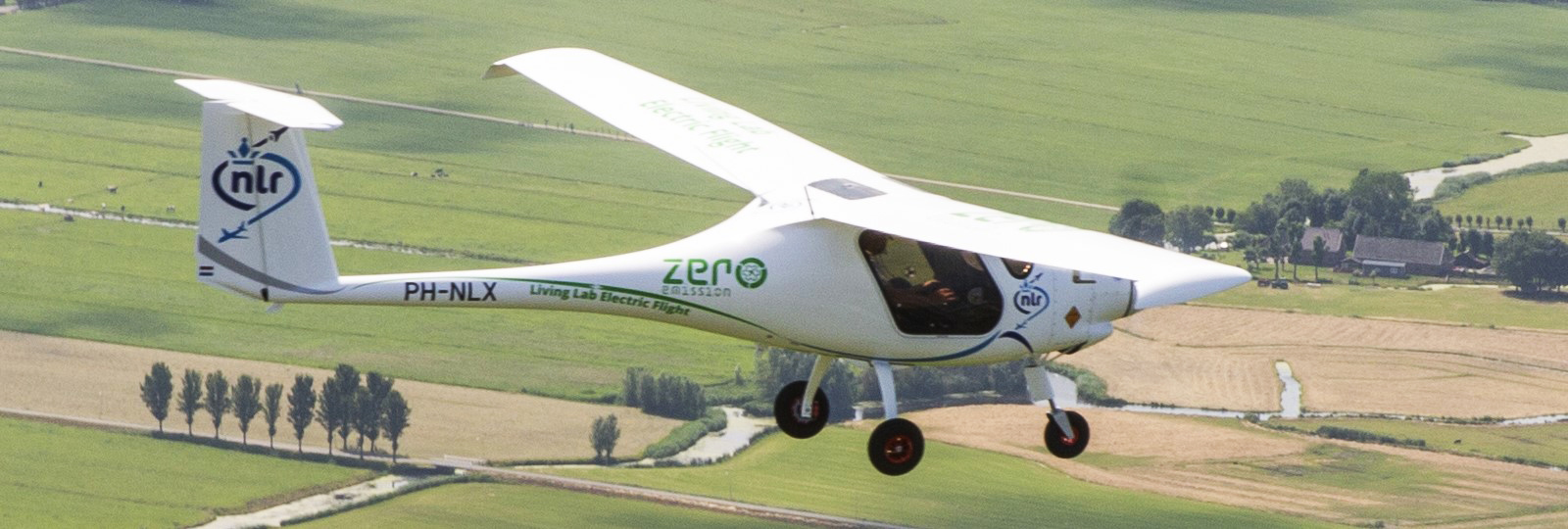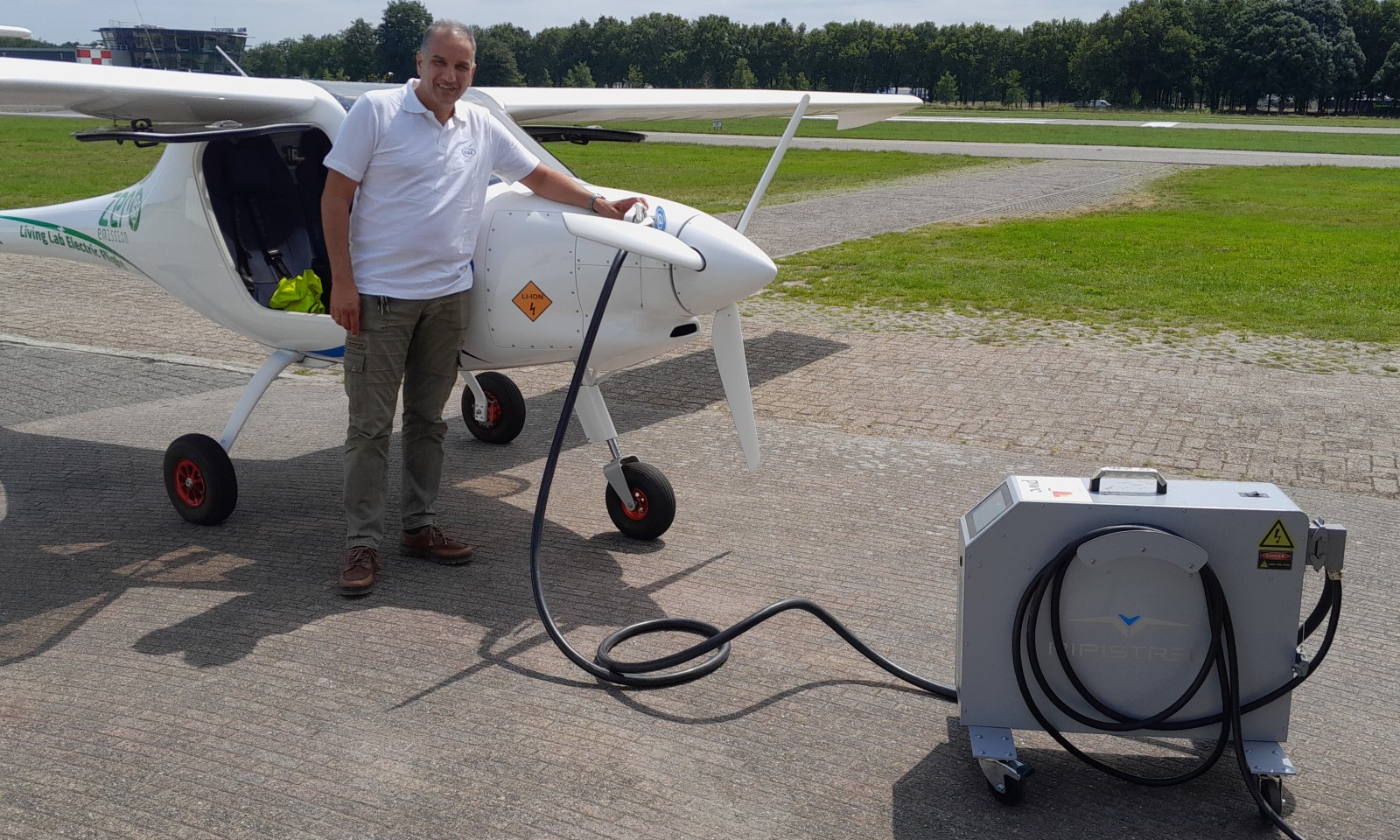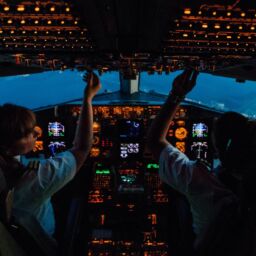
With fifteen thousand flight hours on piston, turbine and jet-powered aircraft, you’d think one has seen it all. And yet, flying an all-electric aircraft is a completely new experience, even for a seasoned pilot. Electric flight is taking-off!
Rotterdam The Hague Airport – We meet Arun Karwal, a senior captain on Boeing 777-787 for a major airline in the Netherlands. Living in Haarlem, just a few steps away from Amsterdam Schiphol airport, he has always been passionate about aviation. Besides his airline flying, Arun is also a research test pilot for NLR, the Royal Dutch Aerospace Center, where he currently test-flies the all-electric Pipistrel. “You can compare the sensation to driving an electric car for the first time: it’s the same, but it’s also different!”, begins Arun.
A different way of thinking
“Flying an electric plane requires a different way of thinking in several areas. This can be challenging if you’re used to flying piston or turbine engines.”, says Arun. “First of all, keep in mind that the energy is stored in lithium batteries. As you know, batteries come with all kinds of charging issues and other failures, such as a risk for thermal runaway. As a pilot, you must be aware of these hazards. You must monitor battery performance closely and apply the relevant normal and non-normal procedures when necessary.”
Range Anxiety
And then there is the ‘range anxiety‘, a phenomenon that is well known to anyone who is considering switching from a conventional car to electric driving. State-of-the-art batteries today have up to 20 times lower specific energy (energy stored per unit of mass) compared to fuel. Flying an electric plane means the range and the endurance will be much less.
“A fully charged Pipistrel provides just under an hour of endurance, and that includes your ‘reserve fuel’. The maximum endurance with electric flying is near the point where a piston aircraft pilot anxiously starts looking for a refueling spot.”, explains Arun.
EASA regulations require a minimum reserve power of 10 minutes for a local VFR flight and a minimum of 30 minutes for cross-country flights. This imposes a restriction on overland flying. The destination must be within 20 minutes of flight time (approximately 30 NM). Additionally, an approved charger must be available to charge the batteries for the return flight. “Charging the batteries takes about two hours from empty to fully charged. So, I would add a ‘good coffee bar’ as a third requirement for your destination!”, Arun smiles.
Decarbonising aviation
Arun is test-flying the Pipistrel Velis Electro SW128 (ICAO designator PIVE) for the NLR. The Pipistrel is the first, and currently the only, full-electric aircraft to receive an EASA type certificate. This aircraft is certified CS-LSA Special Conditions for Day VFR with a MTOW of 600 kg / 1300 lbs. The PIVE is actually considered a variant of the Rotax-powered Virus SW121. NLR investigates the possibility of increasing the range of electric flying by means of new battery technology or new fuel cells, and by aerodynamic improvements. (read more)
There are similar electric flight testbed projects in Europe, such as the Electric EEL, a hybrid converted Cessna 337 Skymaster, in the UK. The Slovenian Army’s SAF Aviation School starts testing the Pipistrel as of this month. The long-term goal of these projects is to reduce CO2 emissions in aviation. It will certainly be another decade before general aviation, including drone air taxi services, can switch to electric-only flying. But electric flight is taking-off today!
Electric Piloting
As a pilot, to fly the electric Pipistrel under the privileges of a Single Engine Piston (SEP) class rating, you must follow a theoretical knowledge CBT-course and perform at least 4 flights under supervision of an instructor, including a cross-country flight.
“Despite the limited range, flying an electric plane could not be easier and more pleasant!”, Arun emphasizes. “The single power lever controlling kilowatts to the electric propulsion, crisp flight controls and low engine noise all provide a very pleasant flying experience. And yes, an electric aircraft promises zero emissions, less maintenance and overall lower operating costs. There is still a long way to go, but I strongly believe this is the future for general aviation!”
Pictures © Royal NLR – 2021
Share this article with your friends and colleagues:






















